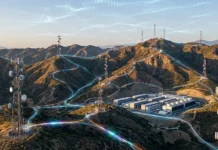5G is moving away from the realm of the possible and into a stage where operators can look forward to building actual networks. As of now, operators and vendors are taking evolutionary and revolutionary steps to ensure 5G can be fully operational by 2020. The second Brooklyn 5G summit provided a measure of how far the technology, architecture and the ecosystem to support it, has come. Hosted jointly by Nokia Networks and NYU WIRELESS Research Center, the summit attracted 5G researchers from academia, forward-looking operators and leading network vendors to share ideas and explore how they could co-operate.
While much work remains to be done to move beyond proof of concept, particularly in the area of standards and also engaging with potential users, the buzz at the event was that the industry is starting to coalesce around a shared vision of 5G and pinpointing the key enablers to make it a reality.
Watch this video for a snapshot of key highlights and participant insights from the event.
Prototypes show the possibilities
The cornerstones of the technology are beginning to fall into place and attendees could see for themselves some of the prototype equipment that will make 5G work. Making use of the entire frequency spectrum up to 100 GHz is vital and the demonstrations showed how this could be done, using techniques such as Massive MIMO and beamsteering achieved by phased array technology. Nokia and National Instruments demonstrated the fastest mobile network with a 10 Gbps over-the-air data rate.
Dr Hossein Moiin, Executive Vice President, Technology and Innovation, Nokia Networks, stressed how much progress has been made when he said that 12 months ago, the industry was searching for questions but now has some of the answers.
A new architecture is needed for the 5G era
One of the major opportunities is about how to shape 5G network architecture. Current telco architecture will move from being based on vertically integrated discrete network elements, to being cognitive, cloud optimized and seamless in operation.
The architecture will be able to support scalability and flexibility in conjunction with distributed cloud, low latency switching at the edge, new levels of reliability from multi-connectivity and apply smart scaling of the user plane and control plane independently. It will also have security and privacy built in, enable energy efficient operation, offer the lowest running costs, and, critically, support an extremely wide range of uses.
White paper identifies eight key architectural dimensions
A new Nokia Networks white paper entitled ‘Network architecture for the 5G era’, explores how these demands could be met in eight key areas, or domains, from the access all the way up to service enabling.
Cognitive Domain: Collects data from the network and external sources such as social networks. This data is processed in real-time, for example to find the root cause of problems and to identify the impact on subscribers or the operator’s business.
Service Enablement Domain: Provides authorized third parties with controlled and secured access to the operator network so they can deploy applications and services to mobile consumers, enterprises and vertical segments.
Shared Data Domain: A common data repository for shared data access eliminates application-specific data silos whenever possible and provides a consistent set of Key Performance Indicators (KPIs).
Software Appliances Environment: All network functions and services are built from software with the physical resources needed to implement any network element being virtualized and accessible through an infrastructure manager.
Virtualization Framework: Comprises an execution plane and an automation plane. Computing, networking and storage resources on the execution plane are accessed by network functions through a virtualization layer. The automation plane automates the management of these resources, through operations such as creation, deletion and scaling of the network functions and allocation of the underlying resources.
Radio Access Network: 5G radio architecture will integrate existing systems like LTE-Advanced and Wi-Fi, with new technologies for ultra dense deployments, machine type communication, highly reliable communication and minimal latency. Computing resources will be close to the radio, with control and coordination functions more centrally located for seamless integration with the wide area network.
Orchestration and Management: Several levels of orchestration will be needed including service orchestration for services, developed by the operator and offered to users; and the management of cloud services and available resources, performed by the virtualized infrastructure manager domain.
Security and Privacy: Threats to the networks must be detected and dealt with quickly, requiring a multi-dimensional, cohesive and holistic architecture that links security and privacy to network events.
The Security and Privacy Architecture must be constantly vigilant; must automate data collection, analysis and response; and be able to evaluate threats beyond the network.
An architectural vision
The proposed architecture for 5G era networks is dubbed “Cognitive and cloud Optimized Network Evolution” (CONE) and will, Nokia believes, enable operators to reposition in the changing ecosystem and change their business in response to new market demands.
With on-the-ground research offering practical answers to deployment questions, new products starting to make it from the research lab to the outside world and a new sense of co-operative optimism in the air, 5G is moving along the road to reality.



















